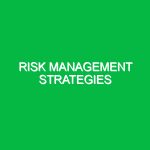In today’s world, where industries and environments are constantly evolving, the importance of preparedness cannot be overstated. Emergency Response Drills stand at the forefront of Health, Safety, and Environment (HSE) practices. These drills are not merely bureaucratic exercises; they are essential simulations designed to prepare individuals and organizations for potential emergencies. Whether it’s a fire, chemical spill, or natural disaster, understanding how to respond effectively can mean the difference between chaos and order, safety and danger.
Understanding Emergency Response Drills
Emergency Response Drills are structured scenarios that simulate potential emergencies within a workplace or community. Their main purpose is to train personnel and ensure that everyone knows their roles and responsibilities when a crisis occurs. These drills can encompass a variety of situations, from evacuations to first aid responses, and they are crucial for maintaining a safe environment. The relevance of these drills in HSE cannot be understated; they not only protect lives but also safeguard property and ensure compliance with legal requirements.
Potential Hazards and Risks
Identifying potential hazards is the first step in creating effective Emergency Response Drills. Various risks can arise in different environments, and understanding these is critical. Here are some common hazards associated with emergency situations:
1. Fire Hazards
Fires can break out due to electrical faults, flammable materials, or even human error. The consequences can be catastrophic, leading not only to injuries but also to significant property damage. Emergency Response Drills related to fire safety should include evacuation routes, the use of fire extinguishers, and the importance of accountability during roll calls.
2. Chemical Spills
In industries where chemicals are used, spills can pose severe health risks. Exposure to toxic substances can lead to immediate health threats and long-term environmental damage. Drills should thus focus on containment procedures, proper use of personal protective equipment (PPE), and decontamination processes.
3. Natural Disasters
Natural disasters such as earthquakes, floods, and hurricanes can strike with little warning. Preparing for these events requires understanding the specific risks associated with the region. Drills should incorporate safe zones, communication protocols, and resource management.
4. Medical Emergencies
Medical emergencies can arise unexpectedly, whether due to accidents or health conditions. Training personnel in first aid and CPR can save lives. Drills should include scenarios that teach how to assess injuries, call for help, and administer basic care.
Safety Precautions and Best Practices
Implementing effective safety precautions is vital for minimizing risks during emergencies. Here are some best practices associated with Emergency Response Drills:
1. Regular Training and Drills
Conducting regular drills ensures that all personnel remain familiar with procedures and can respond confidently. For example, a manufacturing plant might schedule monthly fire drills to reinforce evacuation routes and emergency contacts. It’s essential to vary scenarios to cover different types of emergencies.
2. Effective Communication
Clear communication is critical during emergencies. Establishing a communication plan that includes alarms, signals, and designated spokespersons can help streamline the response. For instance, using two-way radios in a large facility can ensure that all team members are informed and coordinated during a crisis.
3. Utilizing Technology
Incorporating technology into drills can enhance training effectiveness. For example, virtual reality (VR) simulations can provide immersive experiences that allow participants to face realistic scenarios. This approach not only engages participants but also helps them learn in a safe environment.
4. Post-Drill Evaluations
After each drill, conducting a debriefing session is essential. This allows participants to discuss what went well and identify areas for improvement. For example, if a fire drill revealed that certain exit routes were blocked, immediate action can be taken to rectify the situation.
Regulations and Standards Governing Emergency Response Drills
Various regulations and standards guide the implementation of Emergency Response Drills to ensure compliance and safety. Understanding these guidelines is essential for organizations:
1. Occupational Safety and Health Administration (OSHA)
In the United States, OSHA sets forth regulations that require employers to develop and implement emergency action plans. These plans must include procedures for reporting emergencies, evacuation routes, and employee training. Compliance with OSHA standards is critical for workplace safety.
2. National Fire Protection Association (NFPA)
The NFPA provides guidelines on fire safety, including recommendations for conducting fire drills. Their standards emphasize the importance of regular training, proper documentation, and accountability during emergencies.
3. International Organization for Standardization (ISO)
The ISO has established standards, such as ISO 45001, that focus on occupational health and safety management systems. These standards encourage organizations to integrate emergency preparedness into their overall safety strategies.
Real-Life Examples of Effective Emergency Response Drills
While theoretical knowledge is essential, real-life examples illustrate the importance of preparedness vividly. Consider the case of a large oil refinery that faced a chemical spill incident. Prior to the event, the facility had conducted extensive Emergency Response Drills focusing on spill containment and evacuation protocols.
When the spill occurred, the team was able to respond swiftly and efficiently, minimizing the environmental impact and ensuring the safety of all personnel. Their familiarity with the procedures allowed them to focus on resolving the situation rather than being paralyzed by uncertainty. This incident underscores the value of regular, well-structured drills.
Conclusion
Emergency Response Drills are an integral part of any Health, Safety, and Environment strategy. They prepare individuals and organizations for the unexpected, ensuring that everyone knows how to react in emergencies. By identifying potential hazards, implementing safety precautions, and adhering to regulations, organizations can cultivate a culture of safety and readiness.
Remember, the goal is to not only comply with legal requirements but also to foster a safe environment where everyone can work without fear. As the saying goes, “It’s better to be prepared and not needed than to be needed and not prepared.” Investing time and resources into Emergency Response Drills can lead to safer workplaces, reduced risks, and ultimately, saved lives.


